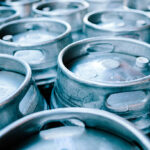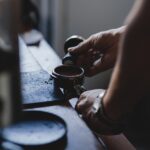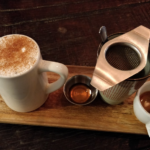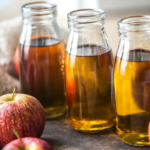In the world of coffee enthusiasts, the quest for the perfect espresso is both a passion and an art form. However, not everyone has access to a high-end espresso machine to craft their morning elixir. But fear not—achieving that rich, robust espresso flavor without the machinery is not only possible, it’s an adventure into the heart of coffee brewing itself. This guide, “How To Make Espresso Without A Machine,” is your gateway to mastering the art of manual espresso making. With expertise drawn from the finest baristas and a deep dive into alternative brewing methods, we’ll explore the secrets behind extracting that perfect shot, even without the traditional equipment.
Our journey will not only reveal the practical steps and tools needed but also the science and finesse behind each method. Whether you’re a seasoned coffee lover or new to the espresso scene, this article promises to enhance your appreciation for the craft and might just change the way you think about homemade coffee. By the end, you’ll not only have the knowledge to impress fellow coffee aficionados but also the skills to brew espresso that rivals your local cafe, using simple tools and a pinch of creativity. So, let’s ignite your culinary curiosity and embark on a quest to unlock the rich, intense flavors of espresso, no machine required. Welcome to a world where the essence of coffee meets innovation—let the journey begin.
Overview of the Popularity and Cultural Significance of Espresso
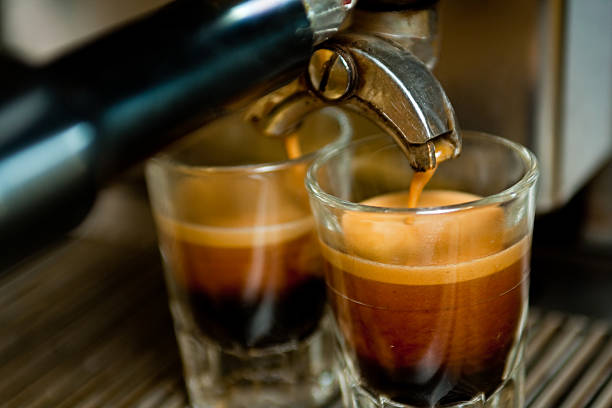
Espresso has become a fixture in everyday life and popular culture. The thick, concentrated coffee with its topping of golden crema is loved for its bold flavor and energizing jolt of caffeine.
The Italian roots of espresso are clearly evident in the drink’s name – espresso literally translates to “pressed out” referring to the pressure and steam used in traditional espresso machines.
Beyond Italy, espresso culture has spread across Europe and beyond. The bustling cafés of France, trendy coffee shops of Australia and America all have their own unique espresso drinks.
In specialty coffee culture today, espresso forms the foundation for popular milk-based drinks like cappuccinos, lattes, and macchiatos. It’s safe to say that espresso has revolutionized and dominated global coffee culture over the past century.
Introduction to Manual Espresso
While most think of gleaming, high-tech machines when imagining espresso, there are many ways to manually brew espresso-style coffee. Using simple, affordable tools results in an incredibly fresh and sustainable cup of espresso.
Manual brewing allows more control over variables and customization to your taste. It also often brings out subtle flavors that get lost using automated machines.
Going manual eliminates the need for electricity, wasteful plastic pods, and expensive equipment. With some basic gear and a bit of practice, you can make café-worthy espresso drinks right at home.
Understanding Espresso
Before we dive into brewing methods, let’s take a closer look at what defines espresso.
What is Espresso?
Espresso is a concentrated coffee beverage brewed by forcing hot water under pressure through finely ground coffee beans. The key characteristics that set it apart:
- High concentration – 1 oz of coffee to 25-30 ml of water
- Thick, syrupy texture with a frothy crema topping
- Intense, robust flavor
- Made under 9 bars of pressure (130 psi)
This combination of flavor potency and velvety mouthfeel gives espresso its signature appeal.
Properly extracted espresso should have a balance of sweetness, acidity, and bitterness. Despite the small size, flavors come through much clearer than a regular cup of coffee.
The History and Culture of Espresso
While espresso feels ubiquitous today, its origins are far more recent than other coffee preparation methods. Here’s a quick look at how espresso developed over the past century into the beloved drink it is today:
- Early 1900s – The first espresso machines emerge in Italy, allowing coffee to be brewed under pressure.
- 1940s – Espresso becomes widespread in Italy after World War 2 as coffee bars sprout up across the country.
- 1950s – Espresso spreads across Europe, with unique drinks created like the macchiato and cappuccino.
- 1960s – The first Peet’s and Starbucks open, bringing espresso to America. Pump-driven machines allow for richer crema.
- 1980s – The modern espresso machine comes to be, using automated, digital controls. Specialty coffee emerges.
- Today – Espresso culture thrives globally as specialty coffee grows. At-home machines and manual methods become popular.
As you can see, espresso has come a long way. Let’s look at why this style of coffee ended up gaining such widespread appeal.
The Global Impact of Espresso
Beyond great taste, several key factors fueled espresso’s rise:
Speed – No other brewing method delivers a concentrated shot of coffee so quickly. Espresso fits perfectly into the fast pace of modern life.
Social Aspect – Coffee shops and cafés create a space for community and connection. Lingering over an espresso is a beloved ritual.
Personalization – Custom espresso drinks allow for individual expression. Ordering an espresso drink becomes a statement of taste and personality.
Espresso’s irresistible aroma, alluring crema, and energizing punch make it a one-of-a-kind coffee experience matched by no other.
The Science of Espresso
While espresso may seem simple on the surface, there’s some complex chemistry that goes into brewing the perfect shot. Understanding the science behind extraction will help as we delve into manual methods.
Espresso Extraction
Brewing espresso comes down to optimizing the extraction of aromatic compounds from the ground coffee. There are two key phases of extraction that impact flavor:
- Solubilizing – Hot water dissolves certain coffee solids during the initial seconds of brewing. This draws out sweeter compounds.
- Hydrolyzing – As extraction continues, water breaks down large molecules into smaller flavor particles like acids and dry solids.
Ideally, extraction ends before excessive undesirable elements are dissolved. Finding the “sweet spot” takes experimentation.
The Crema
That lovely, tiger-striped foam crowning a shot of espresso is called the crema. Formed from emulsified oils, proteins and sugars, crema indicates the quality of the extraction and freshness of the beans.
Crema should be a reddish-brown color and last at least a few minutes after brewing. Too light or gone too fast means the shot is “blonde” and under-extracted.
Now that we understand espresso’s unique appeal and chemistry, let’s go over the essentials for manual brewing.
Preparing to Make Espresso Without a Machine
Making espresso yourself requires some specialized gear and a bit of practice. We’ll cover everything you need to know about tools, coffee beans, grind size, and more.
Equipment and Tools Needed
No need to invest in an elaborate setup – just a few key items enable manual espresso-making:
- Brewing device – AeroPress, moka pot, French press, etc.
- Kettle – For heating water to 195-205°F. Gooseneck offers more control.
- Grinder – Quality espresso requires an even, very fine grind. Burr grinder strongly recommended.
- Tamper – Optional but helps maximize flavor extraction.
- Scale – Crucial for measuring coffee and water proportions.
As long as you have a solid grinder, your existing coffee gear can likely work for espresso. A basic setup runs around $100-$150.
Coffee Bean Selection
Choosing quality, fresh beans tailored to espresso is a must. Look for the following:
- Origin – Opt for South American or African beans, which have the body to stand up to espresso.
- Roast – Medium roasts bring sweetness without excessive bitterness.
- Freshness – Whole beans less than 4 weeks from roasting date ensure fresh flavor.
- Grind – Buy whole beans and grind right before brewing. Pre-ground loses aromatics quickly.
See more : What To Mix With Peanut Butter Whiskey? Get Cool Answer Now
With the right beans and grind, you can coax out every nuance of flavor.
The Perfect Grind
Grind size impacts extraction more than any other factor. For espresso:
- Aim for powdery, superfine texture – Particles should clump together when pressed but feel almost flour-like.
- Adjust based on method – Immersion brewing requires a slightly coarser grind than moka pot or AeroPress.
- Use a burr grinder – Grinds more consistently than blade grinders for optimal extraction.
- Grind fine, adjust size as needed – It’s easier to coarse up than to grind impossibly fine on cheap grinders.
Nailing the right grind takes trial and error but makes or breaks your shot’s quality. Now let’s get into brewing techniques.
Methods for Making Espresso at Home
From portable gadgets to Italian stove-top pots, several clever manual devices can craft an impeccable homemade espresso.
AeroPress
The AeroPress combines immersion brewing with pressure to produce a shot that rivals professional equipment.
What You’ll Need
- AeroPress chamber
- AeroPress plunger
- Paper filter
- Kettle
- Burr coffee grinder
- Scale
- Timer
Step-by-Step Instructions
- Boil water in kettle and cool to 195°F – optimal AeroPress temperature.
- Grind 18g coffee beans to fine espresso texture.
- Place filter in chamber and add grounds. Gently shake to level surface.
- Pour 50g hot water over grounds. Stir briefly.
- Allow to steep 30 seconds. Grounds will bloom as gas releases.
- At 30 seconds, stir once more. Attach chamber to plunger.
- Slowly depress plunger over 20-30 seconds to force water through filter. Target volume is 25-30g espresso.
- Enjoy your rich, full-bodied espresso. Adjust variables to taste.
With a little dialing in, the AeroPress can pull shots on par with commercial machines at a fraction of the price.
French Press
While not designed for espresso, a few simple tweaks let a French press effectively mimic an espresso’s density and boldness.
What You’ll Need
- French press
- Burr coffee grinder
- Kettle
- Scale
- Small ladle or spoon
Instructions
- Boil water, then let cool to around 200°F – hotter than drip coffee to extract espresso.
- Grind beans to fine texture, slightly coarser than espresso grind. About 28g per 400ml French press.
- Add grounds to empty French press and shake gently to level.
- Pour 200g hot water over grounds. Stir briefly.
- At 20 seconds, stir once more to ensure even saturation.
- Insert plunger partway to create pressure. Allow for total of 2 minutes brew time.
- Plunge slowly. Use ladle to skim crema foam off the top.
It takes some finesse, but a French press can ultimately achieve a similar rich, viscous shot.
Moka Pot
This classic Italian stovetop pot uses steam pressure through grounds to effectively mimic an espresso machine.
What You’ll Need
- Aluminum or stainless steel moka pot (3-6 cup size)
- Stovetop and flame diffuser
- Burr coffee grinder
- Kettle (optional)
- Tamp or spoon
Instructions
- Fill bottom chamber with water just below valve. For 3 cup moka, use 80-90ml.
- Place filter in funnel, add 14-18g ground coffee depending on pot size. Tamp grounds lightly.
- Tightly screw on top chamber. Place on stove on low heat with diffuser.
- Once brewing starts, allow 30-45 seconds until extraction evens out. Remove from heat.
- Pour espresso, mixing crema back in. Add water or steam milk as desired.
Once mastered, the moka pot reliably brews a perfect creamy, full-bodied espresso.
Portable Espresso Maker
Looking for espresso on the go? Handheld portable espresso makers give you barista-style results anywhere.
What You’ll Need
- Manual portable espresso maker
- Accessories like carry case, measuring scoop
- Kettle with pouring spout
- Burr coffee grinder
Instructions
- Fill bottom of espresso maker with hot water just off boil.
- Load portafilter with finely ground coffee using included scoop and tamper.
- Lock portafilter into bottom chamber tightly.
- Pump handle smoothly in full range of motion around 8-10 times.
- Flip device and pour concentrated espresso through spout. Add hot water for americano or steam milk.
Small and lightweight, portable espresso makers offer delicious custom espresso wherever you roam.
Immersion Brewing
The simplest way to make a concentrated, espresso-style coffee is by immersion brewing. All it takes is hot water and any brewing vessel.
What You’ll Need
- Mason jar or French press
- Coffee grinder
- Kettle
- Spoon
- Fine mesh sieve
Instructions
- Grind beans to fine espresso texture, about 10-14g per 6oz serving.
- Boil water, then let cool to 195-200°F. Measure out 6oz per serving.
- Place grounds in jar or press. Pour in measured hot water and stir to saturate.
- Allow to steep 2-2 1⁄2 minutes. Stir thoroughly halfway through.
- Place sieve over cup and pour immersion brew through slowly, pressing grounds.
- Enjoy your concentrated coffee or add hot water for americano.
With just a few minutes and some simple gear, you can create a smooth, robust espresso-style coffee.
Enhancing Your Espresso
Now that we’ve covered a range of brewing methods, let’s look at tips for taking your espresso to the next level.
Water Quality and Temperature
One easy upgrade is using filtered or bottled water to get better-tasting espresso. The right temperature is also key:
- Filtered water prevents minerals from muddling flavor.
- 205°F is optimal, but anywhere from 195-208°F can work.
- Hotter water increases extraction but can cause over-extraction.
Quality water and the right temp makes a world of difference when brewing.
Milk Steaming and Frothing
While not essential, properly steaming milk for lattes and cappuccinos takes homemade espresso to the next level.
Without a Steam Wand
- Use a French press to heat and froth milk.
- Invest in a battery-powered steamer.
- Try a milk frothing wand attachment for drills.
Tips for Foam
- Choose 2% or whole milk. Lower fat=less foam.
- Start with cold milk. Warm milk froths less.
- Keep wand close to surface when steaming.
- Angle pitcher and roll wrist to incorporate foam.
See more : How Many Glasses Are In A Champagne Bottle? Expert Answers
Frothy, velvety steamed milk makes your espresso shine.
Advanced Customization
Once you’ve dialed in technique, try adjusting some variables:
- Grind Size – Finer grind=more extraction, coarser=less
- Dose – More coffee=higher concentration. 15-18g is common.
- Yield – Aim for 25-30ml, adjust to taste preference.
- Water – Try different temperatures and filtered vs tap.
- Tamping – Pressing grounds can increase body and oils extracted.
Don’t be afraid to experiment and find your perfect shot.
Beyond Brewing: The Full Espresso Experience
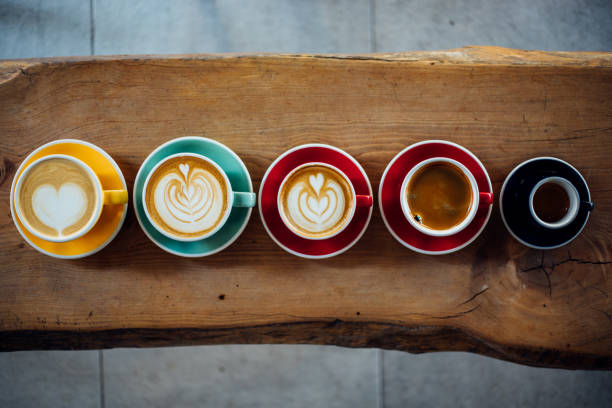
Creating your espresso is only half the journey – let’s look at steps for the full experience.
Coffee Bean Storage
Proper storage keeps beans fresh for better espresso:
- Store in cool, dark place in airtight container.
- Refrigerate or freeze if storing over 2 weeks.
- Let beans reach room temperature before grinding.
Following storage best practices will ensure your beans stay optimally fresh.
Health and Safety Considerations
Brew safely and wisely:
- Use caution to avoid burns when heating water or milk.
- Monitor caffeine consumption as espresso contains more per volume.
- Stay hydrated and limit intake if prone to anxiety or restlessness.
Be smart about quantities and safe brewing practices for an enjoyable experience.
Environmental Impact
Reduce waste for a greener coffee ritual:
- Choose reusable filters over paper when possible.
- Compost coffee grounds if available in your area.
- Opt for glass storage containers instead of plastic bags or tins.
With some mindful tweaks, your daily espresso can benefit the planet.
Cost Analysis
Making espresso yourself can lead to major cost savings:
Coffee Shop Espresso Cost:
- Espresso drink: $3-5
- Daily: $15-25/week
- Yearly: $750-1300
Home Espresso Cost:
- Equipment investment: $100-200
- Weekly beans: $10-15
- Yearly total: $160-380
Manual espresso methods offer an affordable, sustainable way to enjoy coffeehouse-quality espresso at home.
Espresso and Beyond
Now that you’ve become a manual espresso expert, let’s look at how espresso can be an ingredient for all kinds of coffee drinks.
Flavor Profile Differences
Each brew method lends unique characteristics:
- Moka pot – Bold, intense, high body
- AeroPress – Balanced, fruity, bright acidity
- French press – Rich, thick, sedimentary
- Portable maker – Smooth, complex, high crema
Experiment to find your favorite flavor profile or try different ones daily.
Food Pairings
Espresso’s intensity stands up well to or complements many foods:
- Sweet – biscotti, tiramisu, chocolate
- Savory – pizza, caprese salad, parmesan
- Intense flavors – smoked meats, walnuts, brown butter
Enjoy espresso alongside a food that highlights or contrasts the coffee’s characteristics.
Seasonal and Specialty Drinks
Branch out from regular espresso with fun seasonal variations:
Spring – Add orange zest and a dash of elderflower syrup.
Summer – Mix in chilled sparkling water for a refreshing iced soda.
Fall – Top with foamed milk, cinnamon, and pumpkin pie spice.
Winter – Steam eggnog milk and garnish with nutmeg.
Let your creativity run wild. Homemade espresso allows endless drink experimentation.
Maintenance, Troubleshooting, and Resources
Like any hobby, espresso brewing comes with some maintenance and the occasional hiccup. Here are some tips to keep things running smoothly:
Cleaning and Maintenance
- Backflush espresso makers regularly to prevent clogging.
- Disassemble and wash parts after each use to prevent residue buildup.
- Replace gaskets and filters every few months or as needed.
Proper maintenance prevents problems and keeps equipment performing its best.
Troubleshooting Common Issues
- Sour, weak flavor – Under-extracted, grind finer or add more grounds.
- Bitter, harsh taste – Over-extracted, grind coarser or reduce time.
- No crema – Beans are stale, grind too coarse, or water is too hot.
- Weak pressure – Tamp tighter, reduce dose, descale if needed.
Don’t be discouraged. Diagnosing issues leads to a better brew.
Community and Online Resources
Connect with coffee aficionados for tips and inspiration:
- Espresso on Reddit
- Home Barista forums
- Coffee Geek website
- YouTube tutorials
- Local coffee shops
The global espresso community has endless wisdom to share.
Conclusion
We’ve covered all the tools, techniques, and resources you need to start crafting barista-level espresso drinks in your own kitchen. From moka pots to aeropress methods, you’re ready to experiment with the full range of manual espresso brewing. Remember to use quality beans and the right fine grind for optimal flavor. Dial in the variables to match your taste – don’t be afraid to make mistakes. The journey of learning to manually brew espresso is rewarding and will deepen your appreciation for this beloved drink. Even without an expensive machine, you can unlock the secrets to creating an unforgettable espresso experience. So get out there, try different methods, source amazing beans, and explore the vast world of homemade espresso. Your daily caffeine ritual will never be the same.

Executive Chef Sally Nesta has been cooking up a storm at Rocky’s Pub & Grill for over fifteen years. She is known for her delicious, hearty pub grub that will leave you munching for more. If you’re avoiding fat or gluten, no problem! Rocky’s Pub offers a number of low-fat and gluten-free choices. The bar at this restaurant is fully stocked, so pair your meal with a glass of wine or beer.Crowds tend to pack the place on weekends, so call ahead to reserve a table. Street parking is provided for those dining at the restaurant’s South Park Street location.Listen up, penny pinchers! Rocky’s Pub serves lip-smacking dishes that are full of flavor for next to nothing. So when you’re in the mood for some tasty pub food, make your way over to Rocky’s Pub.
